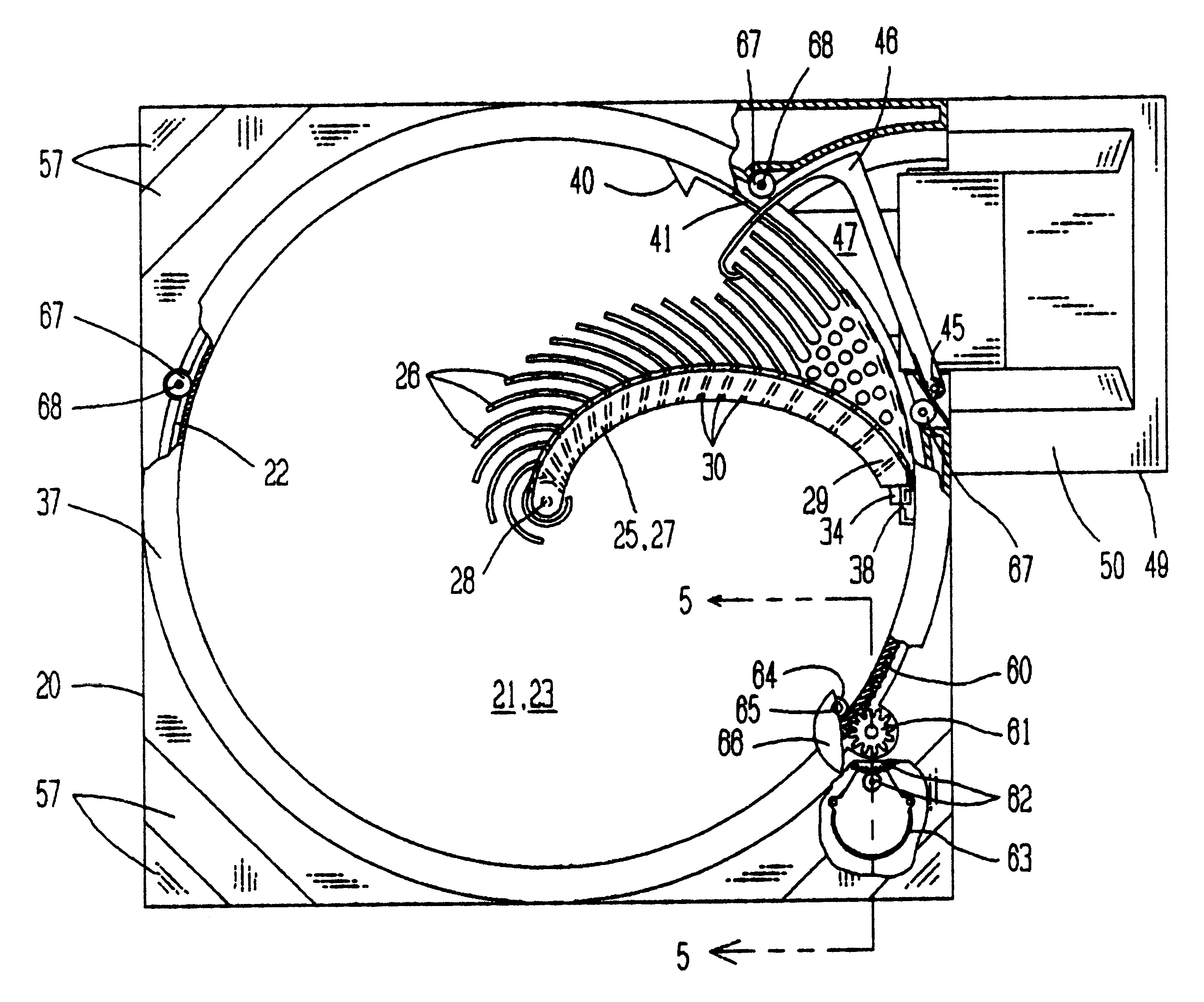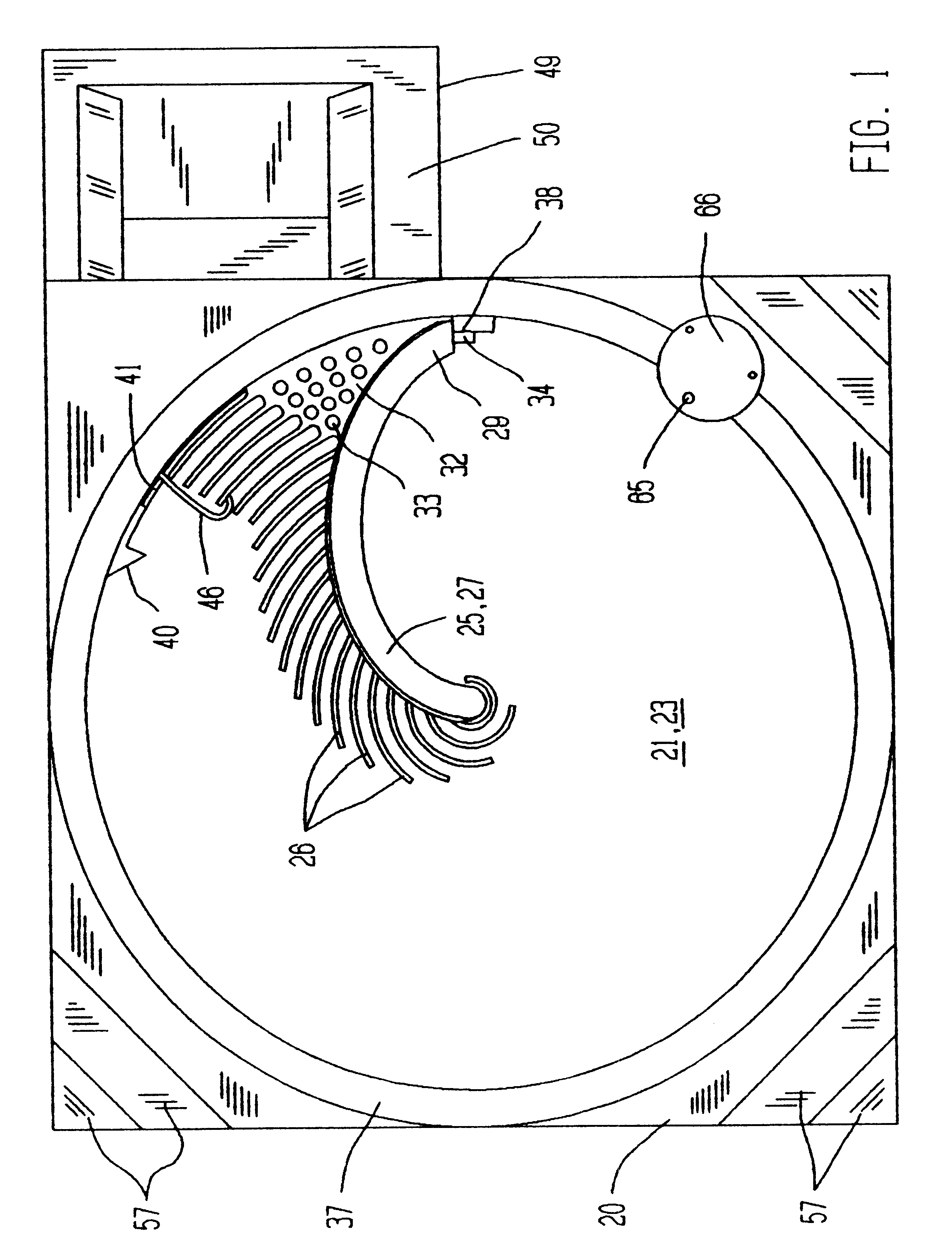Self-cleaning circular litter device
a litter device and self-cleaning technology, applied in the field of self-cleaning circular litter devices, can solve the problems of poor "toilet habits", waste from previous days, and lack of regular cleaning
- Summary
- Abstract
- Description
- Claims
- Application Information
AI Technical Summary
Benefits of technology
Problems solved by technology
Method used
Image
Examples
Embodiment Construction
The present invention relates to a self-cleaning sanitary device for animals. The invention also relates to indoor and outdoor self-cleaning sanitary devices.
The following description is of preferred embodiments of the invention by way of example only and in no way implies and should in no way be construed that the invention is limited to the described embodiments and combinations of features but that other embodiments, variations, features and combinations of features are included within the scope of the claims.
With reference to FIG. 1 and FIG. 2, there is disclosed a self-cleaning litter device that comprises a substantially circular chamber 21 in which a rake (generally indicated as 25) extracts solid waste from a litter material contained therein during use. The rake 25, comprising a support arm 27 and tines 26, extends in a curved or spiral fashion from a post 28 (FIG. 2) located approximately along the central axis of the chamber 21 to an outer end 29 near the side wall 22 of ...
PUM
 Login to View More
Login to View More Abstract
Description
Claims
Application Information
 Login to View More
Login to View More - R&D
- Intellectual Property
- Life Sciences
- Materials
- Tech Scout
- Unparalleled Data Quality
- Higher Quality Content
- 60% Fewer Hallucinations
Browse by: Latest US Patents, China's latest patents, Technical Efficacy Thesaurus, Application Domain, Technology Topic, Popular Technical Reports.
© 2025 PatSnap. All rights reserved.Legal|Privacy policy|Modern Slavery Act Transparency Statement|Sitemap|About US| Contact US: help@patsnap.com



